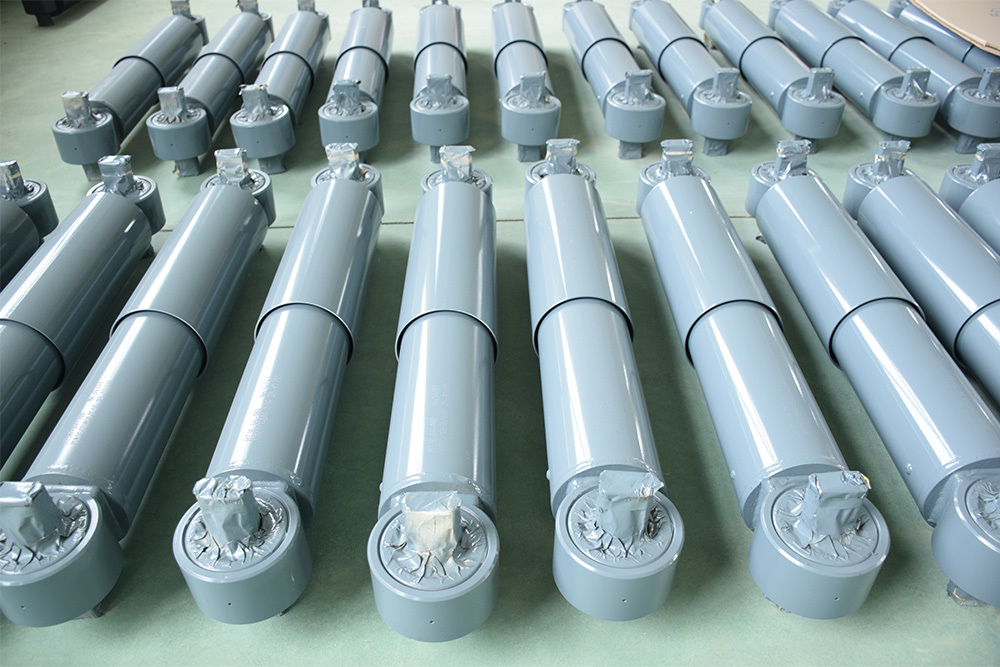Working principle of hydraulic shock absorber
2025-03-25

Hydraulic shock absorbers use the viscosity of the oil to create damping, absorbing the energy of vibrations and impacts.
Hydraulic shock absorbers are widely used in locomotives, vehicles, and other fields as vibration damping devices. Their working principle is mainly based on the fluidity and viscosity of the oil. Here is a detailed analysis of their working principle:
1. Basic Structure and Working Process
Hydraulic shock absorbers are mainly composed of an oil cylinder, piston, throttle holes, and a reservoir. The oil cylinder is filled with oil, and the piston divides the oil cylinder into two chambers (chamber A and chamber B). The piston is equipped with throttle holes to control the flow of oil.
Piston upward movement (extension stroke): The volume of chamber A decreases, and the volume of chamber B increases. Due to the sealing of the oil cylinder, the oil pressure in chamber A increases, and the oil pressure in chamber B decreases. Oil flows from chamber A to chamber B through the throttle holes, while the reservoir replenishes oil to chamber B through the oil inlet.
Piston downward movement (compression stroke): The volume of chamber B decreases, and the volume of chamber A increases. The oil flows from chamber B to chamber A through the throttle holes, while some oil flows back to the reservoir through the oil inlet.
2. Generation of Damping Force
When oil flows through the throttle holes, its viscosity creates flow resistance, which is the damping force. The magnitude of the damping force depends on the flow velocity of the oil and the size of the throttle holes. The faster the flow velocity of the oil, the greater the damping force; the smaller the throttle holes, the greater the damping force.
3. Energy Conversion and Dissipation
Hydraulic shock absorbers use damping force to convert mechanical vibration energy into heat energy in the oil. This heat energy is then dissipated into the atmosphere through the shock absorber casing, thereby achieving vibration damping.
4. Function of the Reservoir
Since the piston rod occupies a certain volume of the oil cylinder, the volume changes of chambers A and B are inconsistent when the piston moves up and down. The reservoir's role is to store excess oil or replenish insufficient oil, ensuring the normal operation of the shock absorber.
5. Applications and Advantages
Hydraulic shock absorbers are widely used in locomotives, rail vehicles, urban light rail vehicles, and large passenger vehicles on highways. They have good vibration damping effects and flexible damping performance, improving the stability, comfort, and safety of vehicle operation.
The above analysis shows that the working principle of hydraulic shock absorbers is simple and efficient, and they are an indispensable part of the vehicle vibration damping system.
More News
Contact Us
Contact Person: Mr. Wang
Contact Person: Mr. Qin
No. 165, Zhenzhong Road, Haimen Street, Haimen District, Nantong City, China.




